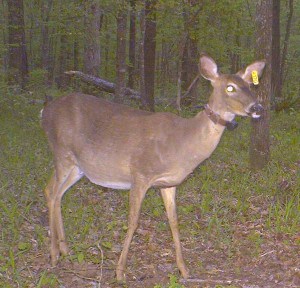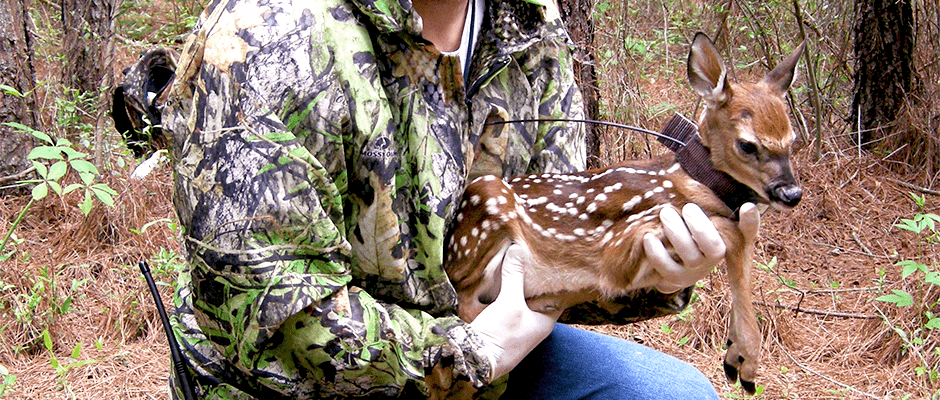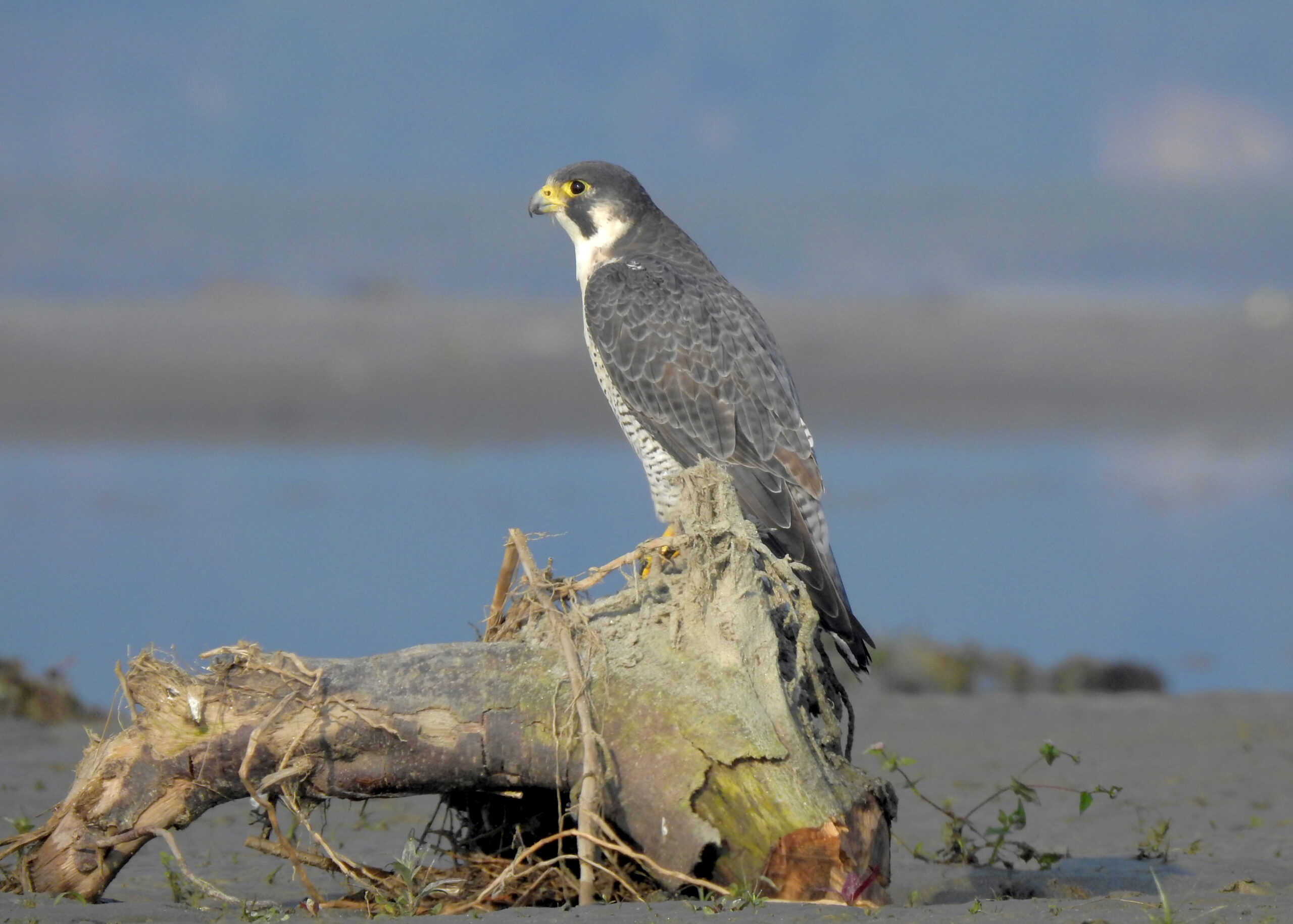Share this article
WSB study: Coyote predation not the main source of declining deer in S.C.
In parts of the southeastern U.S. where coyotes prey heavily on white-tailed deer fawns, wildlife managers should restrict adult doe harvest, a recent study suggests. Using data stemming from research that aimed to evaluate coyotes’ impact on fawns in one site in the region, researchers found that survival rates of adult does was high and apparently unaffected by the predators.
“Coyotes do have the potential to have a big influence on deer populations, but that can be mitigated through limiting harvest of adult does,” said John Kilgo, a wildlife biologist with the U.S. Forest Service and lead author of the study in The Wildlife Society Bulletin.

Researchers radio-collared and monitored white-tailed does to assess survival rates and reasons for mortality. ©John Kilgo
Wildlife managers and hunters had become concerned about white-tailed deer (Odocoileus virginianus) populations in the Southeast after coyotes (Canis latrans) established themselves in the region and prompted reports of considerable predation on fawns and does. Between 2006 and 2012, Kilgo and his colleagues fixed radio collars on 138 adult female white-tailed deer and analyzed the animals’ survival rate and reasons for mortality at the U.S. Department of Energy’s Savannah River Site in South Carolina.
The researchers estimated that about 87 percent of the tagged deer survived annually. Although harvest was low and had little effect on survival, hunting was the primary cause of mortality, responsible for over 40 percent of deaths. Vehicle collisions had the next largest influence on survival. Predation by coyotes wasn’t an evident factor, but the researchers were unable to determine the reason behind one-fifth of the mortalities. Regardless of whether these deaths had all resulted from predation, the total number was inconsequential overall for annual survival, leading the researchers to conclude that coyotes didn’t significantly shape the deer population at the site.
Kilgo attributes does’ high survival and low hunting mortality to a restraint placed on anterless harvest before the study. Without this check, he says, the low-density population could become unstable. White-tailed deer typically have one or two offspring per year, and shooting does compounds pressure from coyote predation on fawns. Though wildlife managers can’t stop natural predatory behavior, they can reduce hunting to boost deer population growth, says Kilgo. However, he adds that if managers have already capped antlerless harvest, further restrictions may only slightly increase survival.
Before coyotes colonized the Southeast, state wildlife agencies struggled to convince hunters to target enough does to control a then exploding deer population. Now, people are more comfortable with doe hunting, and coyotes prey prevalently on fawns in the area. Yet because doe survival and coyote predation vary by location, statewide limits or bans on antlerless harvest aren’t always appropriate. Still, Kilgo stresses cautious deer population management.
To inform this effort going forward, Kilgo and his team are investigating the shifting demographics of deer and coyotes and their interactions over larger scales.
“We’re trying to get a better understanding of how coyote populations vary across the landscape in density and dynamics and whether any variations translate into variable predation on deer,” he said.
Julia John is a freelance science writer.
Header Image: Coyote predation on fawns puts pressure on deer populations; therefore, doe harvests require prudent controls. ©Mark Vukovich








